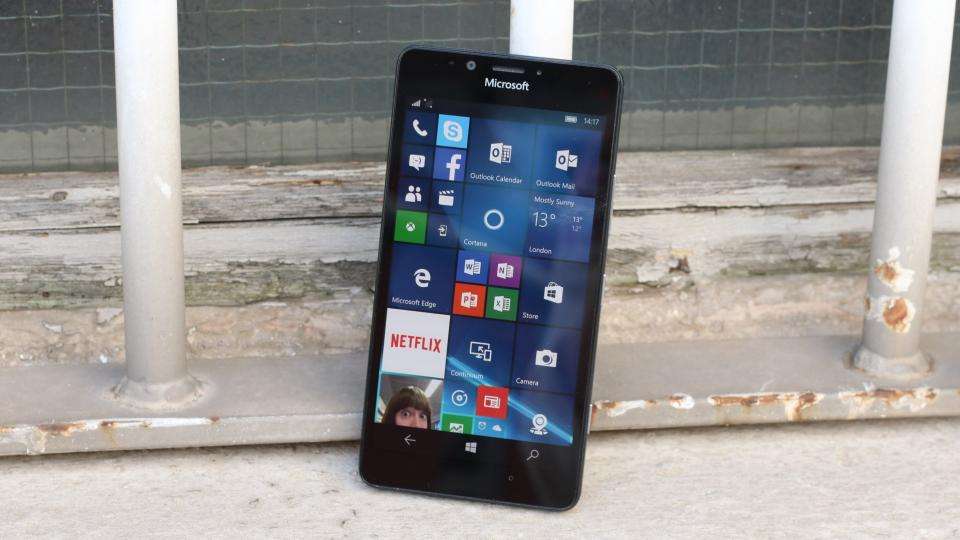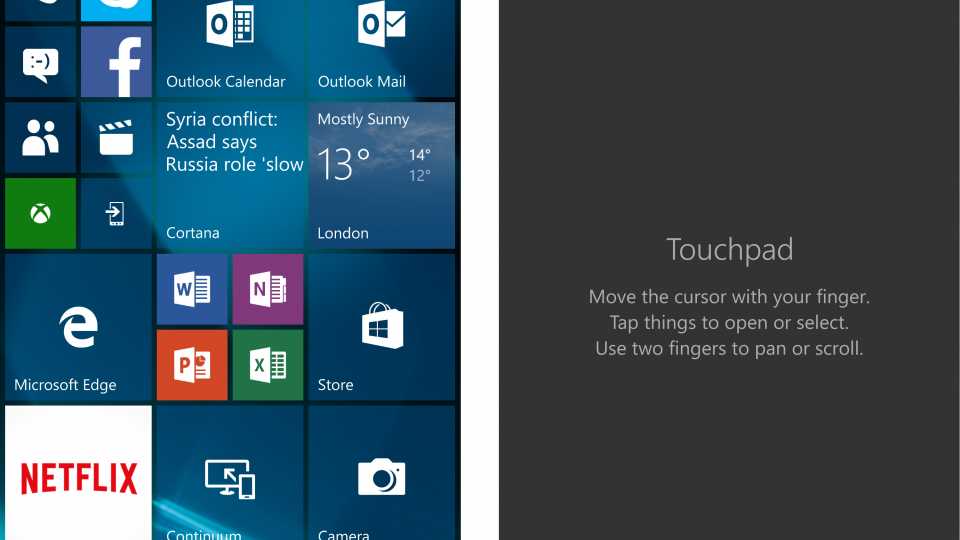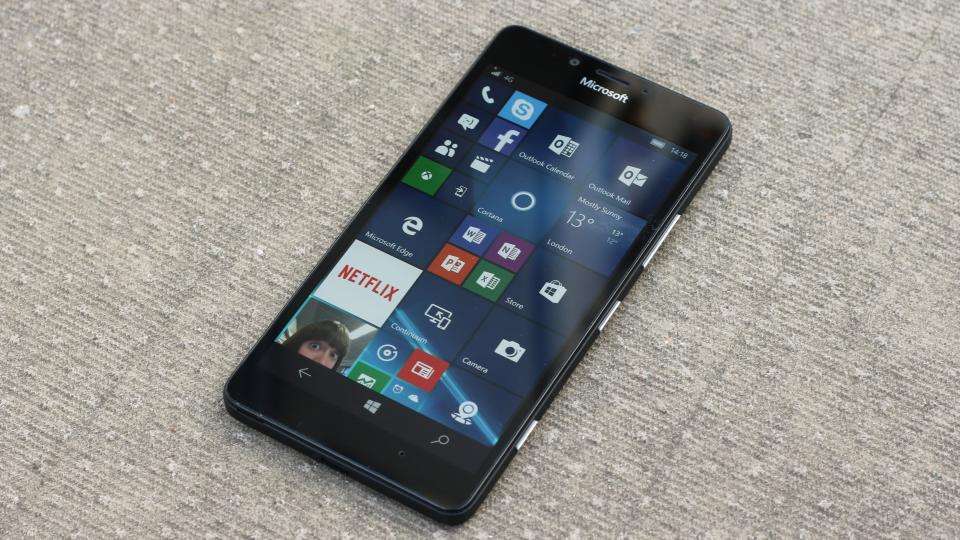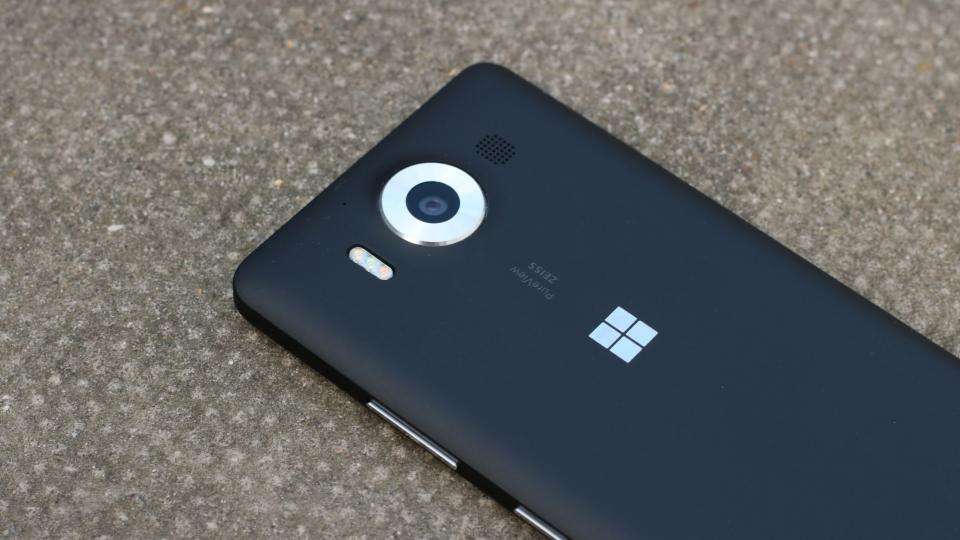Almost six months after Microsoft launched Windows 10 for PCs and laptops , we finally have the last piece of the puzzle: Windows 10 for mobiles, launching first on the Lumia 950 and its big brother, the Lumia 950 XL. As the first smartphone to run the final version of Windows 10, the Lumia 950 introduces a whole host of new features that Microsoft hopes will revolutionise the way our smartphones connect to our PCs.

With Windows 10's universal apps, everything on your phone, from the Edge browser, Office, Maps and Cortana, right down to the layout of your Start screen, now looks virtually identical to what's on your desktop - delivering the same kind of user experience regardless of which platform you're on. Edge's Reading List syncs across your various devices, so you can start reading an article on your phone and finish it when you get home on your laptop. Cortana picks up reminders and calendar appointments you set on your desktop when you're out and about.
Windows 10 Continuum
Microsoft's £80 official Display Dock is required to use it, but once docked, Continuum effectively turns your smartphone into a portable PC. Connected via USB Type-C, the dock hooks up to an external monitor, mouse and keyboard. You can then run full-screen apps such as Office and Outlook, play 1080p video, take calls and reply to texts without halting your progress and unplugging your phone - making it one of the most tempting features of the entire operating system.

^ You can use your phone normally while using Continuum, but tapping the top of the screen (left) makes the touchpad appear (right)
It works brilliantly, and if you find yourself short of a mouse, you can always use the phone's touchscreen instead. It involves a bit of initial setup, but its potential is huge, particularly for mobile workers who have to hot-desk around their office, as it effectively eliminates the need to carry round a laptop all day.
Performance
It's a shame, then that the phone itself just isn't all that pleasant or snappy in use. Despite having a hexa-core, 1.8GHz Qualcomm Snapdragon 808 chip and 3GB of RAM, the Lumia 950 is surprisingly sluggish. Unfortunately, our Geekbench 3 benchmarks aren't available on Windows 10, so we weren't able to run our usual multitasking tests, but it was clear right from the off that Windows 10 isn't nearly as streamlined or efficient as Microsoft's previous mobile OS.
Opening apps can be particularly time-consuming, as can swiping between the Start screen and app list. Even opening different menus in Settings is nowhere near as quick or responsive as you'd hope for a £420 smartphone, often taking a second or more. That might not sound like a long time, but in the context of a mobile operating system, it's enough to make you question whether you even tapped the screen correctly, which just isn't good enough when you're spending this amount of money.

Graphics performance was equally disappointing, only managing 763 frames (around 12fps) in GFX Bench DX's offscreen Manhattan test. Other Snapdragon 808 phones have usually scored around 900 points or 15fps, and you could see the difference in games. It could just about manage simple 3D games like Beach Buggy Racing, but controls weren't particularly responsive and I even experienced frame rate drops in 2D games like Jetpack Joyride. Trying to play a game of Threes! was even worse, as this was so jerky that it was practically unplayable.
Fortunately, the Lumia 950's web browsing performance is much more befitting of its flagship status. While a Peacekeeper score of 750 isn't particularly promising on paper, web pages loaded quickly and it didn't stutter over images or embedded videos.
Battery Life
Battery life was a little underwhelming, with the 3,000mAh battery lasting just 10h 01m in our continuous video playback test with the screen brightness set to 170cd/m2. I would normally expect a battery of this size to last a little longer, as even the Nexus 5X 's 2,700mAh battery managed to last 10h 14m. It's still enough to last a full day, but you'll more than likely need to charge it every night if you're a heavy user.

Luckily, the Lumia 950 supports fast charging if you do find yourself running short on power - even if that does come with a few caveats. Firstly, the Lumia 950 only has a USB Type-C port, so unless you happen to have your charger with you, it's unlikely you'll be able to grab a quick top up at the office or a friend's house. Unlike the Nexus 5X and Nexus 6P , though, it does come with a USB Type-C to Type-A cable in the box, so you can still use it with a traditional USB plug and connect it to your PC or laptop. It also supports wireless charging, and is compatible with regular Qi charge mats.
Design
Weighing 150g and measuring 8.2mm thick, the Lumia 950 is reasonably chunky for its size, but its smooth plastic rear does sit well in your hand. It's a shame Microsoft isn't releasing it in multiple funky colours like previous Lumia phones, as this was easily one of the Lumia range's most attractive features. It certainly doesn't catch the eye like the Samsung Galaxy S6 Edge , for instance, but given its compatibility with Windows 10 Continuum, I wouldn't be surprised if Microsoft was trying to keep it looking as professional and business-like as possible so it blends in with your office.











